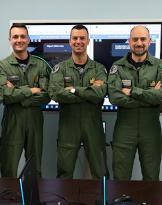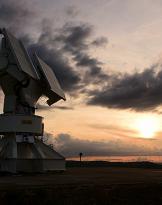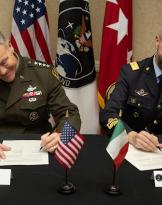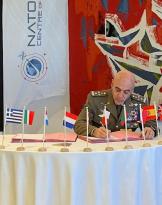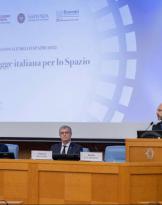In March 2023, the European Union (EU) carried out two important exercises, in the space domain, with the aim of strengthening the European response architecture to emerging threats.
The first exercise, called Space Threat Response Architecture (STRA) 2023, was held from 6 to 10 March 2023 at the headquarters of the European service egrl 'external action (EEAS) in Brussels.
STRA 2023 made it possible to test and improve the EU's response mechanisms to threats capable of compromising the functionality of the space systems of the European program (Galileo, Copernicus, EGNOS, GovSatCom etc.). The scenario adopted for the exercise is in line with the international geopolitical framework of reference and includes emerging hybrid threats (combined attacks of cyber, spoofing e jamming of satellite signals and cognitive disinformation campaigns).
During the course of the exercise, the scenario envisaged theescalation the effects of an attack cyber that have compromised the functionality of the Galileo navigation system (GNSS), by activating the Space Threat Response Architecture, in line with the Council Decision (CFSP) 698/2021.
The exercise involved various stakeholder politicians, diplomats, Member States, the EEAS, the EU Space Program Agency (EUSPA/Galileo Security Monitoring Centre), the High Representative, the Commission and the Council of the European Union.
Italy and Spain, as "Galileo Host Nation", have activated their chain of command, involving the relevant national capabilities for incident management, providing support to the digital forensics and critical infrastructure protection measures.
The STRA 2023 exercise was organized by EEAS/Space Division, in coordination with the Member States, EUSPA/GSMC and the Directorate-General for Defense Industry and Space (DG DEFIS) of the European Commission.
The second exercise is in fact the completion of the STRA 2023 exercise and took place on March 15, 2023. The Political and Security Committee in fact, for the first time, he played a "space table top exercise" (TTX), focused on potential activation of Article 42.7 TEU, in case of dire consequences resulting from an attack in orbit.
In summary, the two exercises made it possible to analyze and evaluate some of the issues that the new EU space strategy for security and defence intends to address concretely, in the coming months. In particular, the Union is considering the possibility of improving the tools for responding to space threats by extending the current architecture to all space assets in the EU. The new strategy also envisages the periodic conduct of exercises in the space domain, to test and explore the activation of new response mechanisms (spacetoolbox).
Source: https://www.eeas.europa.eu/eeas/space-eu-tests-its-response-mechanism-threats_en
image: https://www.euspa.europa.eu/
Calogero Vinciguerra is Space Security Policy Officer and Space Threat Response Architecture Duty Officer at the Space Division of the European External Action Service (EEAS) in Brussels. He has a degree in Political Science and International Relations and holds a University Master's degree in "IT Security and Cybersecurity - Security Manager" at the Link Campus University of Rome. Over the years he has gained multiple experiences both in the training and operational field, both nationally and internationally. He also worked at the NATO Headquarters in Brussels in the Information Assurance sector. He is the author of a book called "Intelligence and Security of Cyberspace", published on May 13, 2022.
(https://www.youcanprint.it/intelligence-e-sicurezza-del-cyberspazio/b/2a...)
Disclaimer
The contents of this article reflect only the personal opinion of Dr. Calogero Vinciguerra and cannot in any case be considered as an official position of the Armed Forces and/or the European External Action Service where he works.



